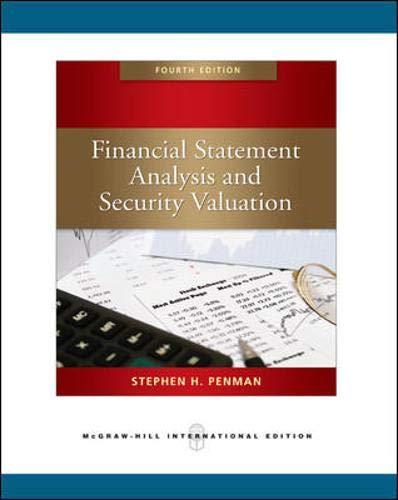In an article in Barron's on April 21, 2008, a commentator remarked, As one of the world's
Question:
In an article in Barron's on April 21, 2008, a commentator remarked, "As one of the world's largest makers of bathroom tissue and baby diapers, Kimberly-Clark knows a thing or two about bottuma. Lately, however, shares of the venerable household-products company, whose Kleenex brand is virtually synonymous with tissue, look to be near a bottom of an- other sort." With Shares trading at $63.20, down to a near low from a 52-week high of $72.79, the trailing P/E of 15 was low by historical standards. "This is as cheap as it gets for this company claimed a portfolio manager. In 2007, Kimberly-Clark (KMB) grew sales by 9 percent, compared with just over 5 percent the year before. Even though it absorbed increased raw material costs without increasing prices, the firm grew operating profit by 24.5 percent. Analysts expected that the firm would be able to pass those costs on to cus tomers in 2008 and 2009, further accelerating earnings growth. Benefits from the firm's Competitive Improvement Initiative and Strategic Cost Reduction Plan, both begun in 2005 to streamline marketing, manufacturing, and administrative operations, were evident, and its research and development operation was producing new products like GoodNites Sleep Boxers and SleepShorts disposable training pants. The Barron's article concluded, "Kimberly shares are a lot like Kleenex: Every investor should tuck some in a pocket." This case asks whether you agree. At the time, the consensus analysts' estimate of earnings per share for the year ending December 31, 2008, was $4.54 and $4.96 for 2009, up from the $4.13 earnings per share reported for 2007. At the end of 2007, the firm also reported book value of $5,224 million on 420.9 million outstanding shares. Morningstar, a provider of financial information and mutual fund rankings, was forecasting a dividend of $2.32 per share for 2008. A. Calculate the forward P/B and price-to-book (P/B) at which Kimberley-Clark was trading. B. Using the analysts' forecasts, value KMB with an additional forecast that residual earn- ings will grow at the GDP growth rate of 4 percent per year after 2009. Use a required return of 9 percent. C. The dividend payout ratio for 2008 is expected to be maintained in 2009. Based on your calculations, what target price would you forecast for the end of 2009? D. Consumers require tissues, paper towels, and diapers in good times and bad, so Kimberly-Clark has a fairly low equity beta is 0.6. Thus, a 9 percent required return may be a bit high. If the equity risk premium for the market as a whole is 5 percent and the risk-free rate is 5 percent, show that the required return from the capital asset pricing model (CAPM) for a beta of 0.6 is 8 percent What would your valuation of KMB be if the required return were 8 percent? Also test the sensitivity of your valuations to a required retum of 10 percent. E. At a price of $63.20, what is the market's implied forecast of the residual earnings growth rate after 2009 for a 9 percent required return? What is its forecast of the earnings-per-share growth rate for 2010? F. Do you agree with the conclusion in the Barron's article? What aspect of your calcula- tions are you most uncomfortable with? Real World Connection The Continuing Case at the end of each chapter covers Kimberly-Clark. Also see Exercises E4.8, E6.14, E7.8, E10.10, and E11.16.
Step by Step Answer:

Financial Statement Analysis And Security Valuation
ISBN: 9780071267809
4th International Edition
Authors: Penman-Stephen-H, Steven Penman





